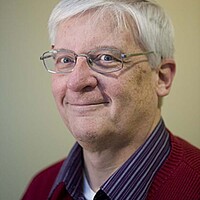Bringing high-tech volunteers and nonprofits together
Loading...
Jozsef Czapovics had long been a willing volunteer for charities.
He’d worked with rescued dogs and helped to paint buildings. But the software engineer knew he was being underutilized. “Better to have a painter do that, and I can use my skills at what I’m really good at to help charities,” he recalls thinking.
On April 9 Mr. Czapovics will officially launch hashtagcharity.org, a website where high-tech professionals who want to do volunteer work and nonprofits groups can find each other.
“Like every good idea it started accidentally,” Czapovics said in a recent telephone interview. At a conference he learned about a small team that was working on “a very nice charity project,” he says. But the charity was also looking for money to hire technical help because it wanted to create a website and other things that would require technical expertise.
Czapovics, who is director of engineering at Prezi, a presentation software company, realized he was managing a team of 200 highly trained software engineers.
“I said, ‘What if I asked around in my teams and got you help?’ ” Twenty employees volunteered and in a one-day “hackathon” “we put together everything this project needed ... and we gave this to them for free, so they could get going right away.”
His group had fun, and it was a good engineering challenge for them as well, he says. “So I thought, ‘What if we do the same thing again in a month?’ ”
But it was hard to find another appropriate project. Soon the momentum was lost.
That’s when the idea struck him: What if charities had a place where they could explain their projects and needs? People with high-tech skills could go there too, meet others with tech skills, form teams, and work on the projects.
The result has been hashtagcharity.org, a “project management platform” where nonprofit organizations and volunteers talk with each other and, if they make a match, work together. As on a dating site, an algorithm proposes what might make for good match ups, using information the tech pros supply from their profiles on LinkedIn, the business-oriented social network.
“We call it SmartMatch,” Czapovics says. But he also points out that these are just suggestions: “You can work on anything” you want to on the site, he says.
It’s all an effort to making volunteering – and finding volunteers – easier. People often want to volunteer but “if helping is full of barriers, it’s not going to happen,” he says.
The projects are worked on collaboratively on the hashtagcharity.org site. If a volunteer needs to drop out, a new volunteer can see what’s been done so far and pick up the project.
“I did a lot of research on volunteering in general,” Czapovics says. Things happen and people need to drop out, he says. “This is normal.”
He expects many nonprofits will be looking for one or more of three things: First, they often need a website built or improved so that they can be found easily online. Second, they may want to improve their presence on mobile devices, such as through building an app. Finally, they may want help creating presentations, such as design and infographics, an area that Prezi, Czapovics’s company, specializes in.
Czapovics, who is based in Budapest, Hungary, has already been test driving the hashtagcharity.org concept. He created a team to work on a project with Action Against Hunger in New York. The humanitarian aid group wanted a better way for people in the organization to know what’s going on with its projects around the world. The hashtagcharity.org project will let them live stream video from the field to the rest of the organization.
Czapovics has decided to start hashtagcharity.org as a for-profit company with a social mission. That decision made it easier to get a first round of venture funding ($250,000), he says.
Hashtagcharity.org is committed to keeping participation on the site free for both volunteers and small charities. To earn income he envisions the possibility that eventually large charities with complex and lengthy projects might pay something for this service. “Even nonprofits should make a profit that they can use to make their business better every day,” he says.
But finding a business model is “not our highest priority today,” he says.
Getting the word out about hashtagcharity.org – and getting helpful projects under way – is.








